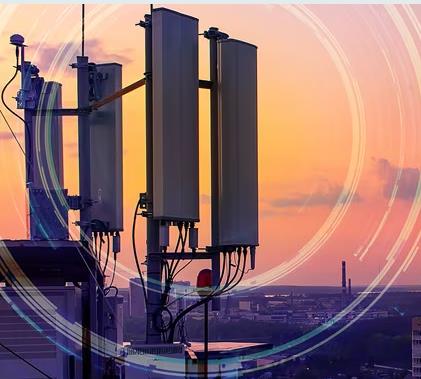With the rapid development of 5G communication technology, radio frequency chips play an important role in realizing high-speed, low-latency, and large-capacity wireless communication. This article will explore the application and challenges of RF chips in 5G communications, providing readers with a comprehensive understanding of the field.
1. RF chip application in 5G communication:
RF chips have a wide range of applications in 5G communications, including the following:
- Front-end module: The radio frequency chip is used to realize functions such as amplification, filtering and frequency mixing of radio frequency signals to ensure the quality and reliability of signal transmission.
- Antenna system: The RF chip is closely integrated with the antenna system to achieve efficient wireless signal transmission and reception.
- Radio frequency transceiver: The transceiver module in the radio frequency chip is used to realize functions such as signal modulation and demodulation and spectrum analysis to ensure high-speed data transmission and reception.

2. Challenges and solutions:
In the application process of radio frequency chips, there are also some challenges, as follows:
- High-frequency signal processing: High-frequency signal processing in 5G communication has higher requirements on the performance and design of RF chips. In response to this challenge, chip manufacturers and designers need to adopt advanced process technology and optimized circuit design to meet the needs of high-frequency signal processing.
- Low power consumption design: 5G communication puts forward higher requirements for low power consumption design. RF chips need to adopt low-power design techniques, such as dynamic voltage regulation and power management modes, to extend the battery life of the device.
- Anti-interference ability: 5G communication frequency band is higher and more susceptible to interference. In order to improve the anti-interference ability of the radio frequency chip, measures such as filters, power amplifiers and interference suppression techniques can be used to reduce the impact of interference.
- Packaging and heat dissipation: The packaging and heat dissipation of high-frequency RF chips also need to be considered. Proper package and thermal design can improve the stability and reliability of the chip.
in conclusion:
Radio frequency chips have important application prospects in 5G communications, but they also face some challenges. These challenges can be overcome to achieve efficient and reliable 5G communications by adopting solutions such as advanced process technology, low power consumption design, anti-interference technology, and appropriate packaging and thermal design. The further development of radio frequency chips will promote the continuous innovation and application expansion of 5G communication technology.
RF chip related products:
- Proximity Sensors
- RF Accessories
- RF Amplifiers
- RF Demodulators
- RF Detectors
- RF Evaluation and Development Kits, Boards
- RF Front End (LNA + PA)
- RF Misc ICs and Modules
- RF Mixers
- RF Modulators
- RF Power Controller ICs
- RF Receivers
- RF Shields
- RF Transceiver ICs
- RF Transceiver Modules and Modems
- RF Transmitters
- RFID Accessories
- RFID Antennas
- RFID Evaluation and Development Kits, Boards
- RFID Reader Modules
- RFID Transponders, Tags
- RFID, RF Access, Monitoring ICs

